Follow the instructions on this page to completely remove Vivaldi on your PC. For any part you don’t quite understand, feel free to leave comments at the bottom of the page.
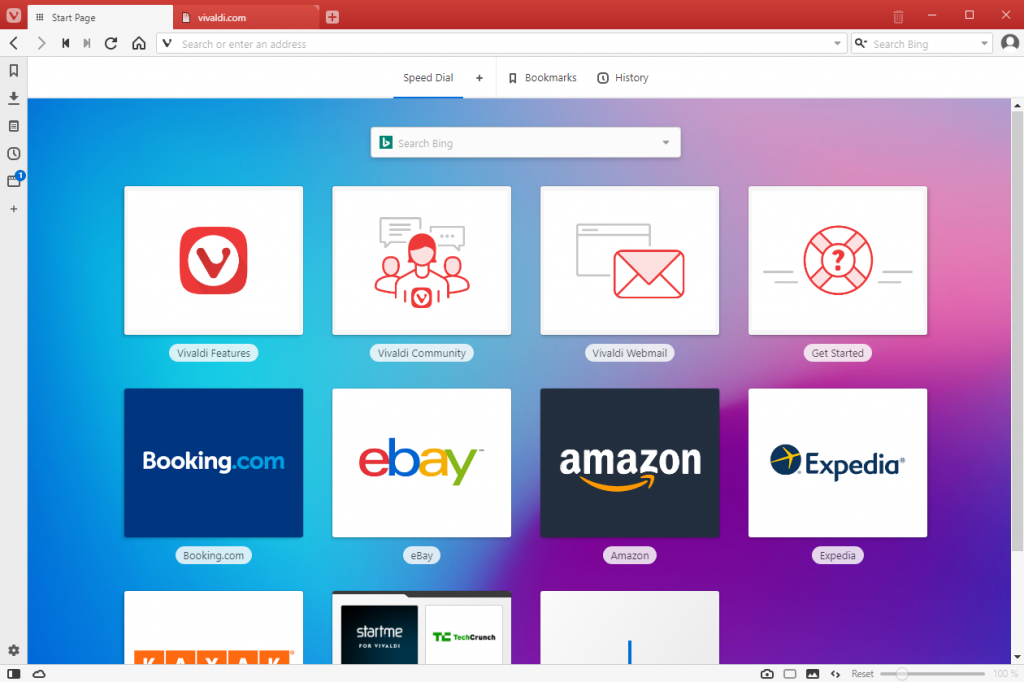
Vivaldi is a free web browser that provides some different tricks, which can be straightforward to access. It supports Windows, macOS, and Linux. Lately some users have been seeking solutions to uninstall this program, so we are writing this post to provide assistance. If you would like to remove Vivaldi completely without leaving any leftovers, you can follow our instructions below.
Remove Vivaldi Using Special Uninstaller
Though you can easily find various removal tools on the Internet, the hard part is which to choose. If you kinda lost your way, take this recommendation – a good general-purpose tool that is available in most versions of Windows and works with types of programs:
1. Click any of the blue download buttons on this page or visit the homepage to download Special Uninstaller.
2. Launch it by double-clicking it on the desktop or click its icon on the taskbar, and you can see clearly what programs are installed currently. Choose Vivaldi and click Run Uninstaller.
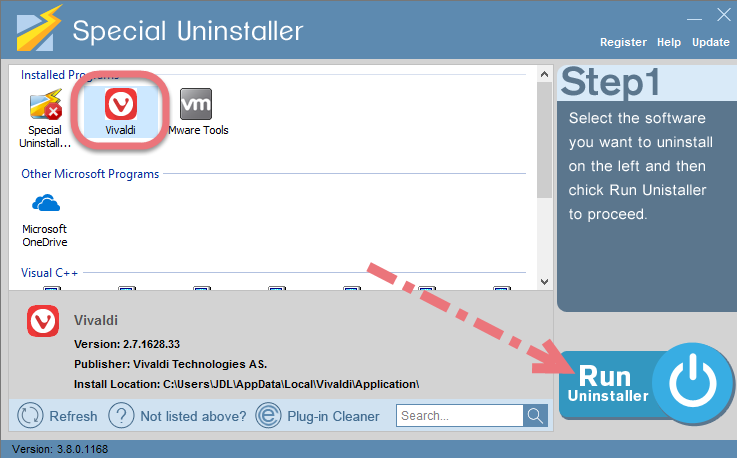
It will scan for all the related files and get ready for your next request, during which you may be asked for confirmation of this removal, just click Yes/OK to proceed.
3. Click Scan Leftovers when it turns to blue, then you see the all the vestiges that most users will forget to delete during the manual removal. Click Delete Leftovers to fully remove Vivaldi.
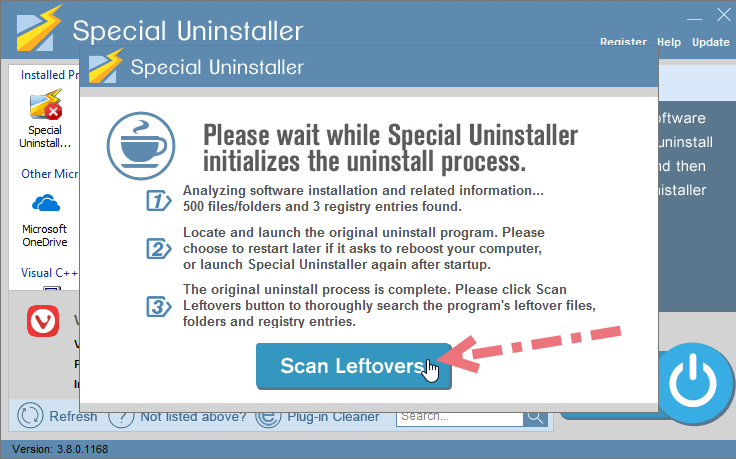
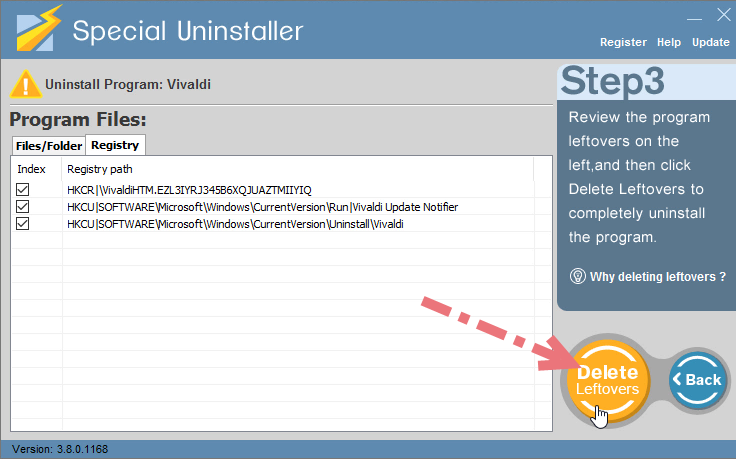
Clicking Back to refresh the list of currently installed programs, and check whether your target has gone. You can perform the same steps to remove other unwanted programs on your computer. I do hope this recommendation can be a better removal solution to you anytime.
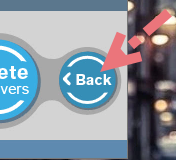
How You Can Remove Vivaldi in Windows
There could be kinds of reasons that you failed to remove Vivaldi or some other programs in Windows, but I’m not wasting your time on reading the technical failures instead of solutions. If you think the problem comes from Vivaldi itself, try to reinstall the program first, so that the missing-file issue would be solved, and the corrupted/damaged pieces would be replaced. Then let’s move on to the specific uninstall tutorials:
1. Shut down the program and each of its processes.
1.1 Go to the System Tray in the bottom-right corner.
1.2 Right-click on the Vivaldi icon and select Exit.
1.3 Right-click on the Taskbar and select Task Manager.
1.4 Successively select the Vivaldi processes to end.
2. Open the list of currently installed programs (Programs and Features).
2.1 Click the Start button.
2.2 Enter “Control Panel” in the search box
(Or right-click the Start button, and select Control Panel).
2.3 Click the Uninstall a program link under Programs.
3. Remove Vivaldi by activating its built-in uninstaller.
3.1 In the list you will see all the programs you’re having in the system.
3.2 Find and double-click Vivaldi to start the removal.
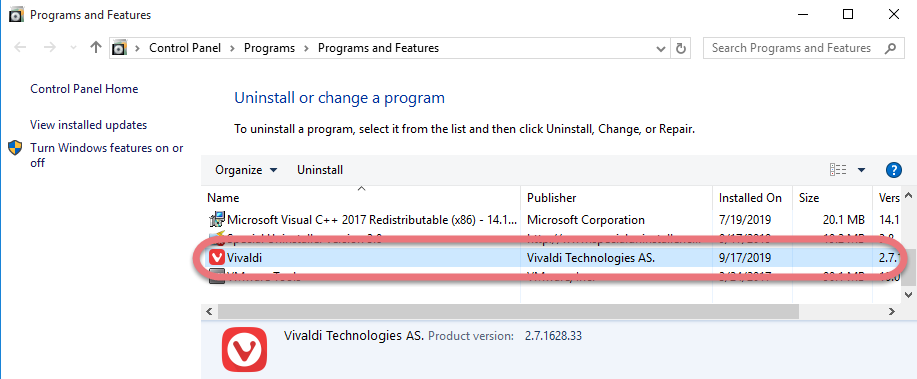
4. Proceed with the removal and provide the confirmation.
4.1 When it says “Are you sure you want to remove Vivaldi” and provides an option to delete your browsing data:
Choice 1: If you don’t plan to reinstall it, check the option and click Uninstall.
Choice 2: If you want to reinstall it later, just click Uninstall.
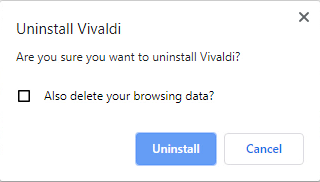
5. Open the Registry Editor.
5.1 You can see there is a Search box on the taskbar on the time if you’re using Windows 10, otherwise click Start to use the Search box there.
5.2 Type “regedit” in the box.
5.3 Select regedit from the results to open the Registry Editor.
6. Find and delete the registry entries (leftovers) of Vivaldi.
Note: doing this will remove all the entries related to the publisher’s programs, so first you need to be sure you have performed the above steps to uninstall the bundled programs and there’s no other related software installed.
6.1 You can choose to back up the registry in case of any mistaken deletion: On the navigator click File > Export…, type a name and save the copy to a location.
6.2 Then, to remove the leftovers: Delete this folder: HKEY_CURRENT_USER\SOFTWARE\Vivaldi
7. Reboot your computer to take effect.
If you haven’t restart the computer yet, do it now. Then you can go to the System Tray, Start menu, Programs and Features, etc. to check whether the program has been completely uninstalled.
In the last I shall mention that if you have installed an antivirus software, there’s no need to install another. In fact, more than one antivirus programs may cause conflicts which will seriously slow down your PC. It’s not that hard to keep your system safe, just pay a little more attention when you download/install something, visit a link or open an email, etc.

Leave a Reply